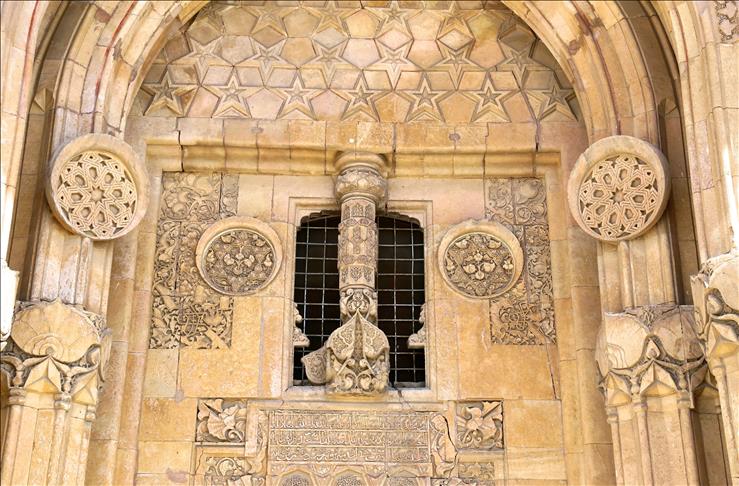Turkey moves to protect ancient sites from mass tourism
Having gained two new entries to the UNESCO World Heritage List, Turkey wants to see 'controlled and considered' access to avoid the fate which has befallen other ancient sites damaged by 21st century tourism

By Esra Kaymak
ISTANBUL
A balance must be achieved between attracting tourists keen to visit Turkey's classical heritage and protecting ancient sites from being harmed, a prominent professor has told AA.
Neslihan Dostoglu, head of Istanbul Kultur University's architecture department, was speaking in the wake of Turkey's northwestern city of Bursa and its historical Cumalikizik district being accepted on a UNESCO World Heritage List last month in Doha.
Having presided over the UNESCO project for Bursa and Cumalikizik, Dostoglu states that a more controlled and conscious protection of the areas would take place under the United Nations body.
She added that a balance must be struck, as about 2.5 million overnight stays took place in Bursa in 2013 alone, excluding the number of tourists visiting the city in daytrips according to data from the Turkish Culture and Tourism Ministry.
Turkey has been keen to preserve its heritage amid recent examples of mass tourism damaging unique sites.
In 2012, an ancient Mayan stone temple at Tikal, Guatemala was damaged by tourists flocking to the site for an "end of the world" party.
Tourist hordes have also been warned off by local people on the remote Pacific Ocean destination of Easter Island – home to hundreds of mysterious carved stone heads.
According to news reports, pressure is growing on Italian authorities to take drastic action against the daily influx of visitors to Venice who crowd the city's narrow streets and Renaissance squares.
Noting that they had to submit a report every five years to the UNESCO committee over the condition of the site, Dostoglu says that the new designation will make the city more careful about its heritage, preventing building or construction work which might harm the silhouette of the historical view.
"One has to offer a management plan to UNESCO while applying. So, when we presented the Bursa field management plan to the committee, we specified the regions with a core field, which is the actual region under UNESCO's protection and a protection field to make sure that the core field will be protected," Dostoglu said.
Amid these worldwide fears over damage to heritage sites, Turkey's Permanent Representative to UNESCO, ambassador Huseyin Avni Botsali, told Anadolu Agency that "Turkey should be regarded as a super-state in the world with its civilization and cultural heritage and not as a developing-world country anymore."
As the number of Turkey's natural and cultural heritage sites on the list of UNESCO has risen to 13 with these latest additions, the country now ranks among the top 15 worldwide the U.N. body's cultural heritage list.
Pergamon county and what experts describe as its 'multi-layered cultural landscape' is expected to increase the international popularity of the historic site, according to archaeologist Bulent Turkmen from the UNESCO department of Pergamon Municipality.
Already receiving 450,000 to 500,000 tourists a year, the homeland of parchment paper dating back over 2,000 years faces the problem of being known only for some of its sites, Turkmen tells Anadolu Agency.
"While applying to UNESCO, we wanted to emphasize the multi-layered cultural landscape of the region, including remains from the Ottoman period and the historic city center, where people still live and do shopkeeping," Turkmen said.
Some other internationally known historic sites on the UNESCO list are the world's first psychiatric hospital in Asklepion and the Acropolis hill, hosting great temples and a dramatic theater dating back to 7 B.C.
Turkmen noted that local sights like the Red Basilica, the Greek old houses in the neighborhood of the 18th century around the castle, the arasta bazaar from the Ottoman period, the caravanserais and historic Turkish baths right in the middle of the city center had also entered the list.
He noted that tourists were coming to the city on daytrips and did not spend much time exploring, adding that he expected the UNESCO designation to change this.
Shopkeepers in the city center have also welcomed the UNESCO protection by celebrating the addition in one of the central squares last month. Turkmen claims a market revival will take place and contribute financially to the shopkeepers of the region.
According to ambassador Botsali, Turkey's ancient city of Ephesus near Izmir and the Diyarbakir ramparts in Turkey's south east were on the UNESCO World Heritage List for 2015.
To be included on the World Heritage List, sites must be of outstanding universal value and meet at least one out of 10 selection criteria of which the first is to represent a "masterpiece of human creative genius" – such sites will need controlled tourism in the future.
Anadolu Agency website contains only a portion of the news stories offered to subscribers in the AA News Broadcasting System (HAS), and in summarized form. Please contact us for subscription options.

